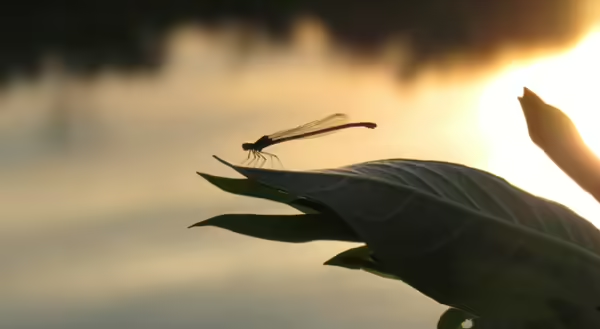
Summer is a wonderful time to enjoy the outdoors, especially if you are near water where you might encounter members of the Odonata order. This group includes dragonflies and damselflies, which can often be seen resting on plants or rocks close to freshwater habitats.
Adult dragonflies are beautiful insects frequently observed during the warmer months. However, the majority of their lives are actually spent underwater during their larval stage. Dragonflies can remain in this aquatic stage for one to three years, while their adult form lasts only one to three weeks.
What is the lifecycle of a dragonfly?
Female dragonflies can lay hundreds of eggs near water. In their larval stage, known as nymphs, dragonflies consume mosquitoes, fish, and other insect larvae. As they mature, nymphs undergo multiple molts. At the end of their larval stage, they emerge from the water, and their exoskeleton splits open, revealing the adult dragonfly we are more familiar with. Adult dragonflies have large eyes, two pairs of wings, and long bodies.
Dragonflies and damselflies belong to the same order and share many similarities, but according to the Forest Preserve there are several key differences that can help you tell them apart.
Eyes: Dragonflies have larger eyes that dominate most of their head, whereas damselflies have smaller eyes with noticeable space in between them.
Body Shape: Dragonflies are larger than damselflies. Dragonflies are usually longer than 2 inches compared to damselflies that reach about 1.5 inches. Additionally, damselflies are more slender, having twig-like bodies verse dragonflies which have thicker bodies.
Wings: Both types of insects have two sets of wings, but their shapes differ. The hind wings of dragonflies are broader at the base where they attach to the body, while damselfly wings are more slender and taper towards the base.
At Rest: When at rest, a dragonfly's wings extend straight out, similar to an airplane’s wings. In contrast, a damselfly’s wings fold back in alignment with its body.
Dragonflies and damselflies are beneficial insects in our ecosystems because they help control insect populations. They also serve as environmental indicators, as their presence or absence can provide important information about habitat health and water quality. While they are enjoyable to observe, they do not stay in one place for long. The next time you are near freshwater, take a closer look for these fascinating flyers and see if you can distinguish between the two!